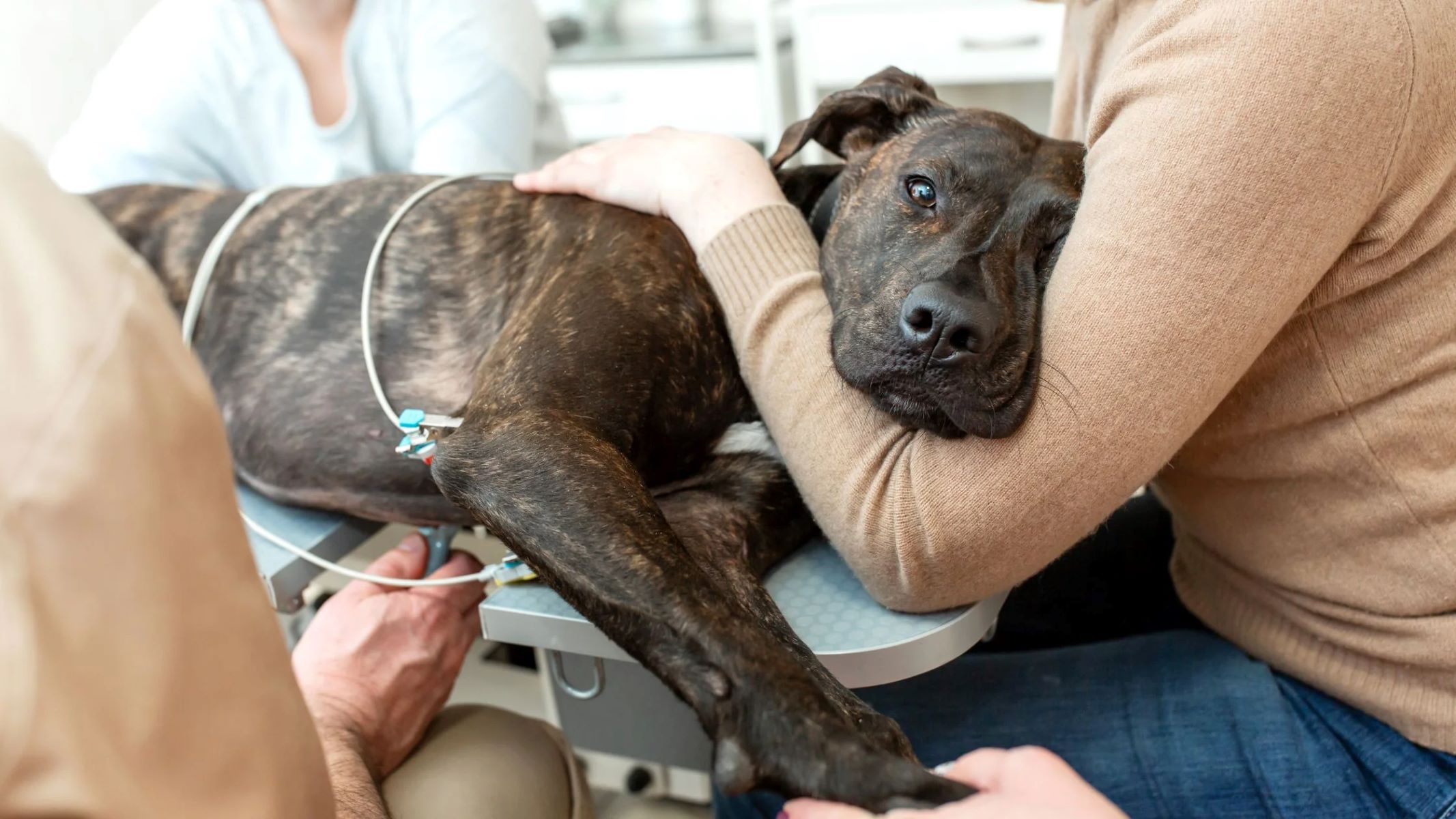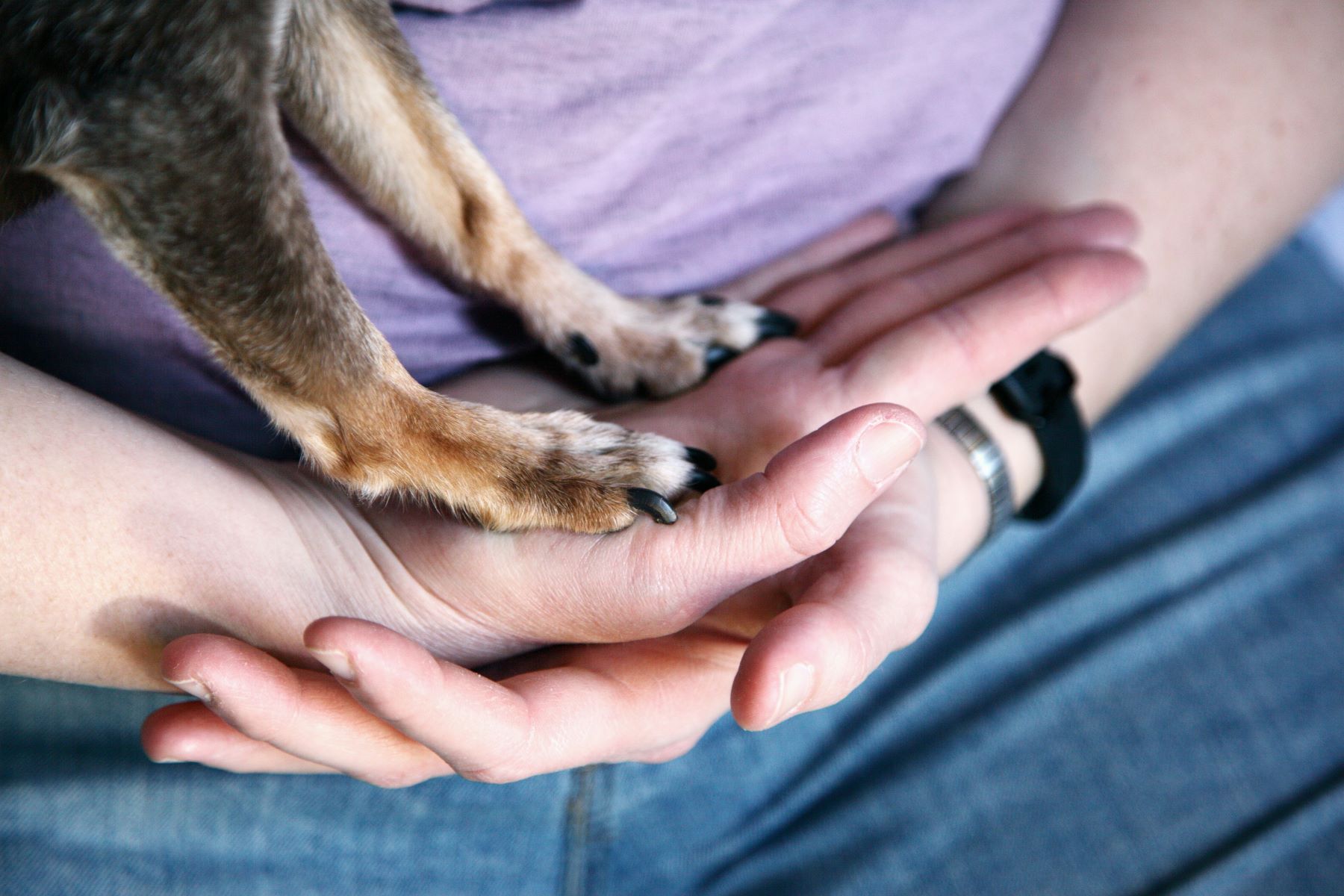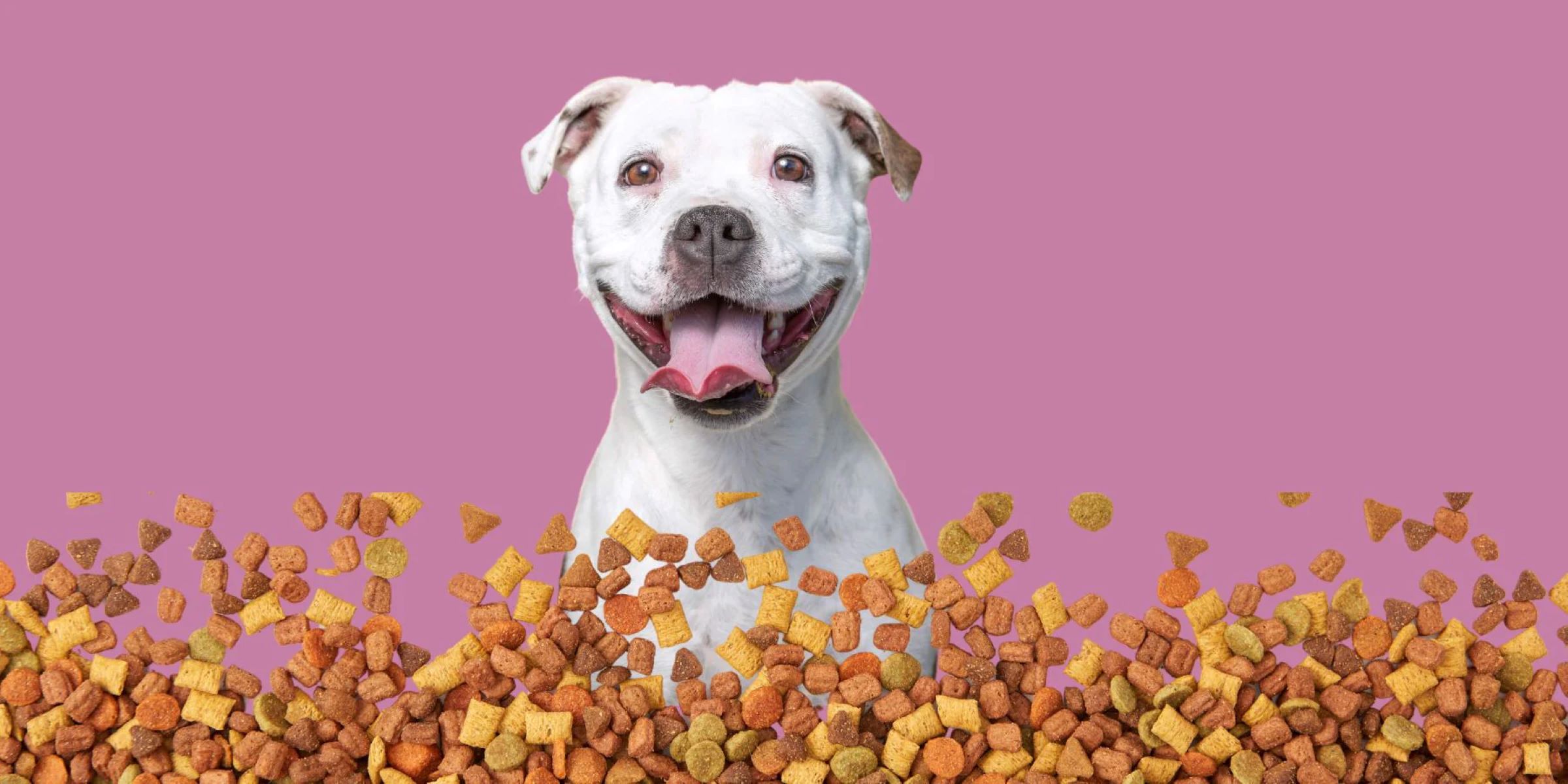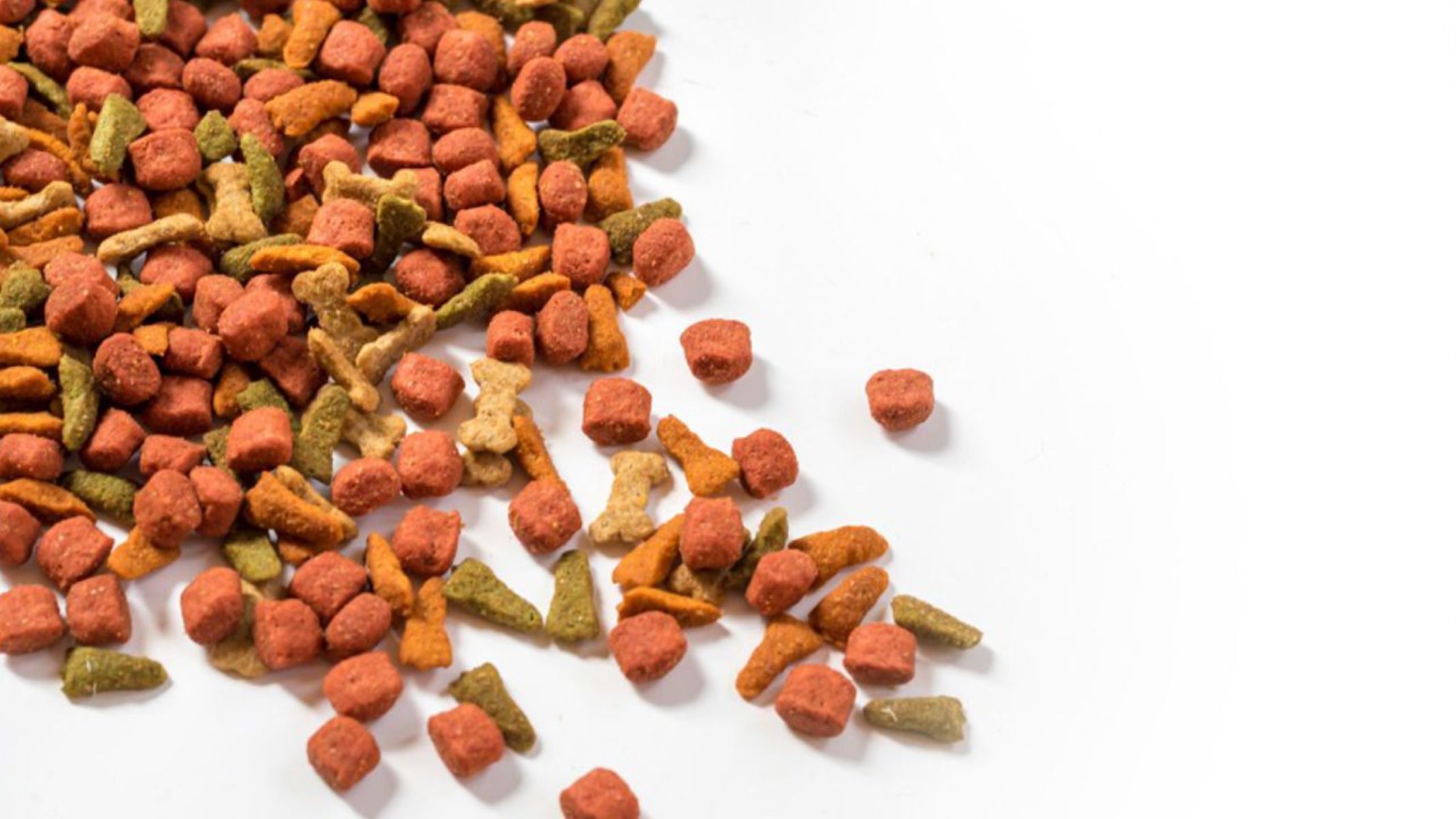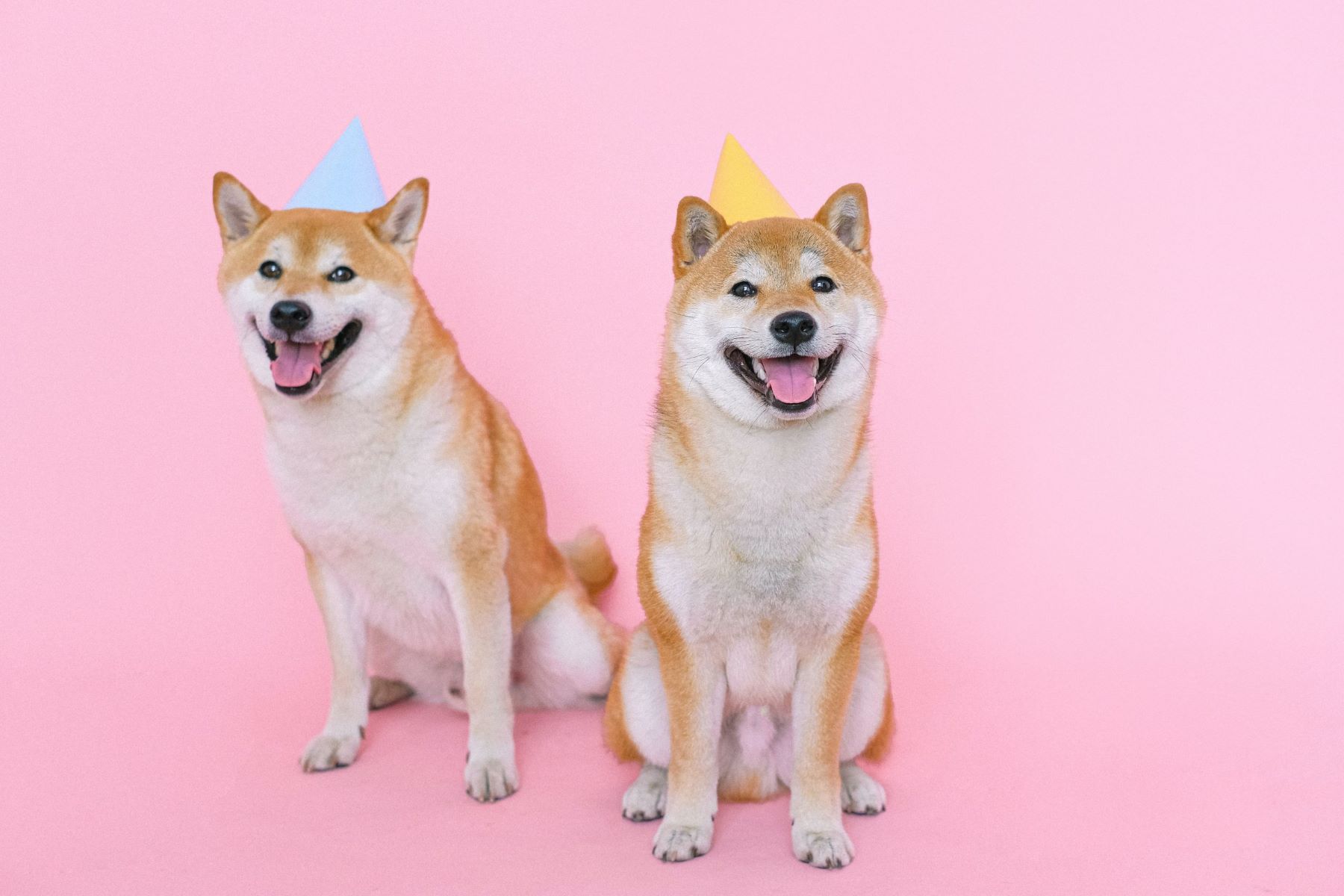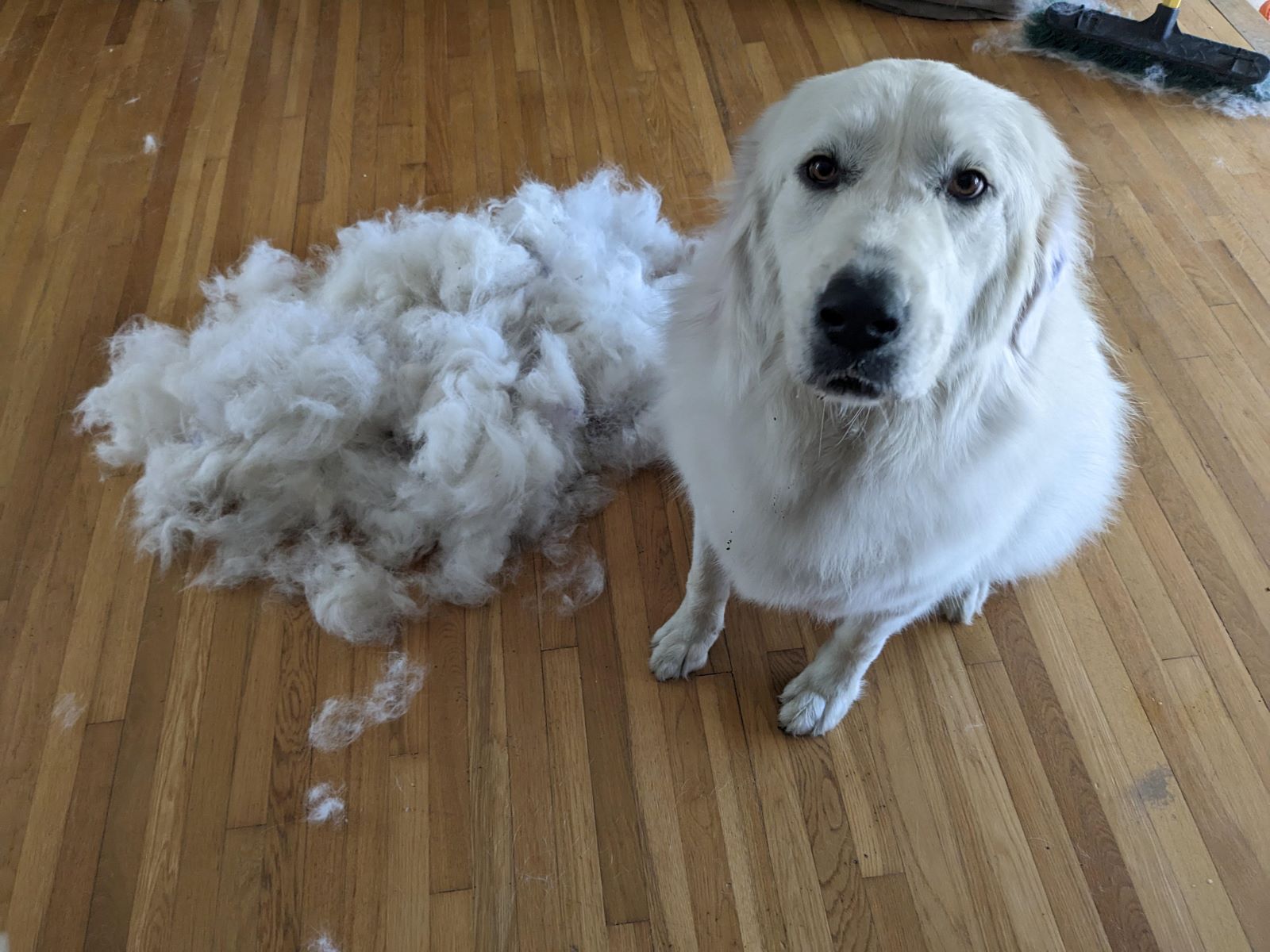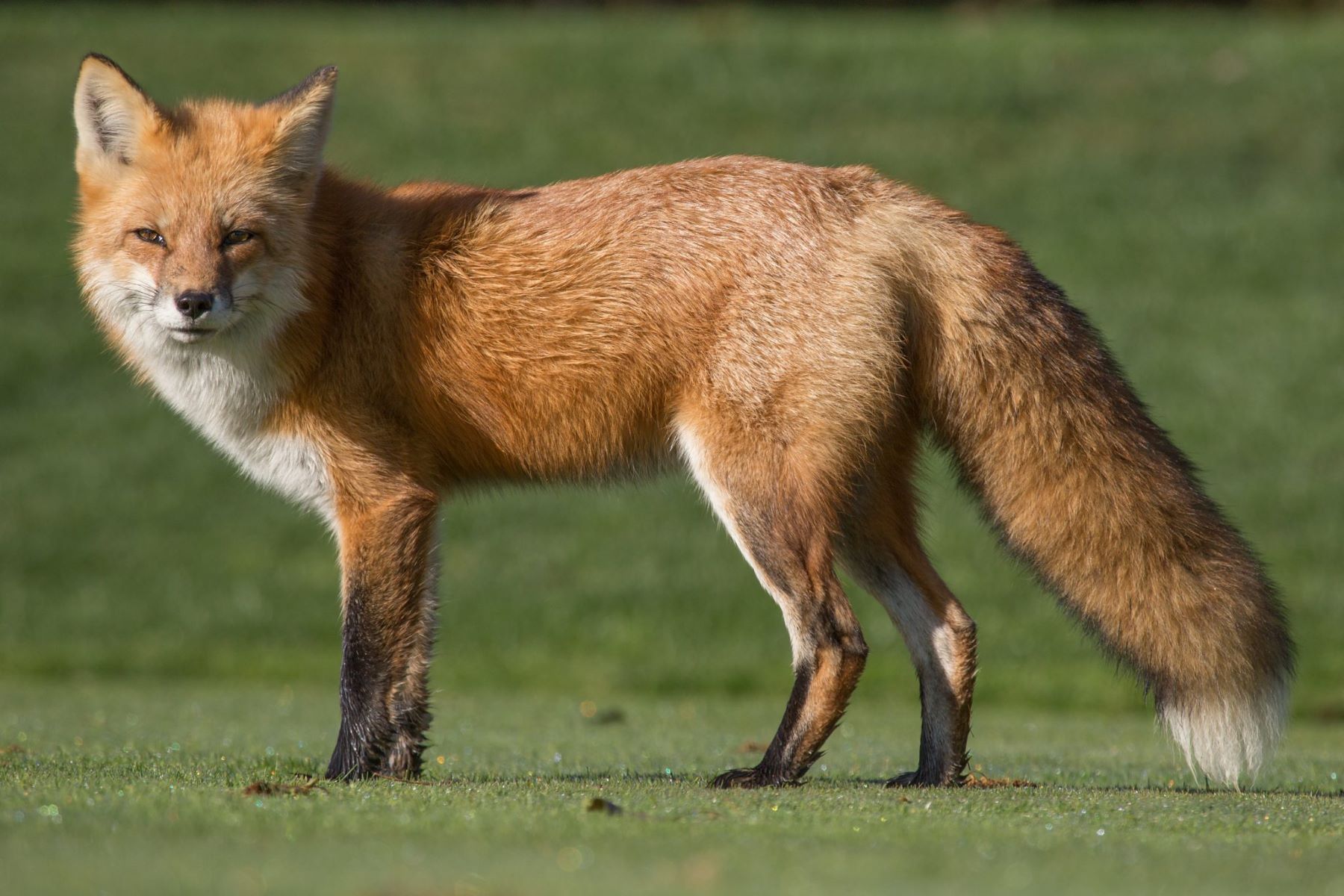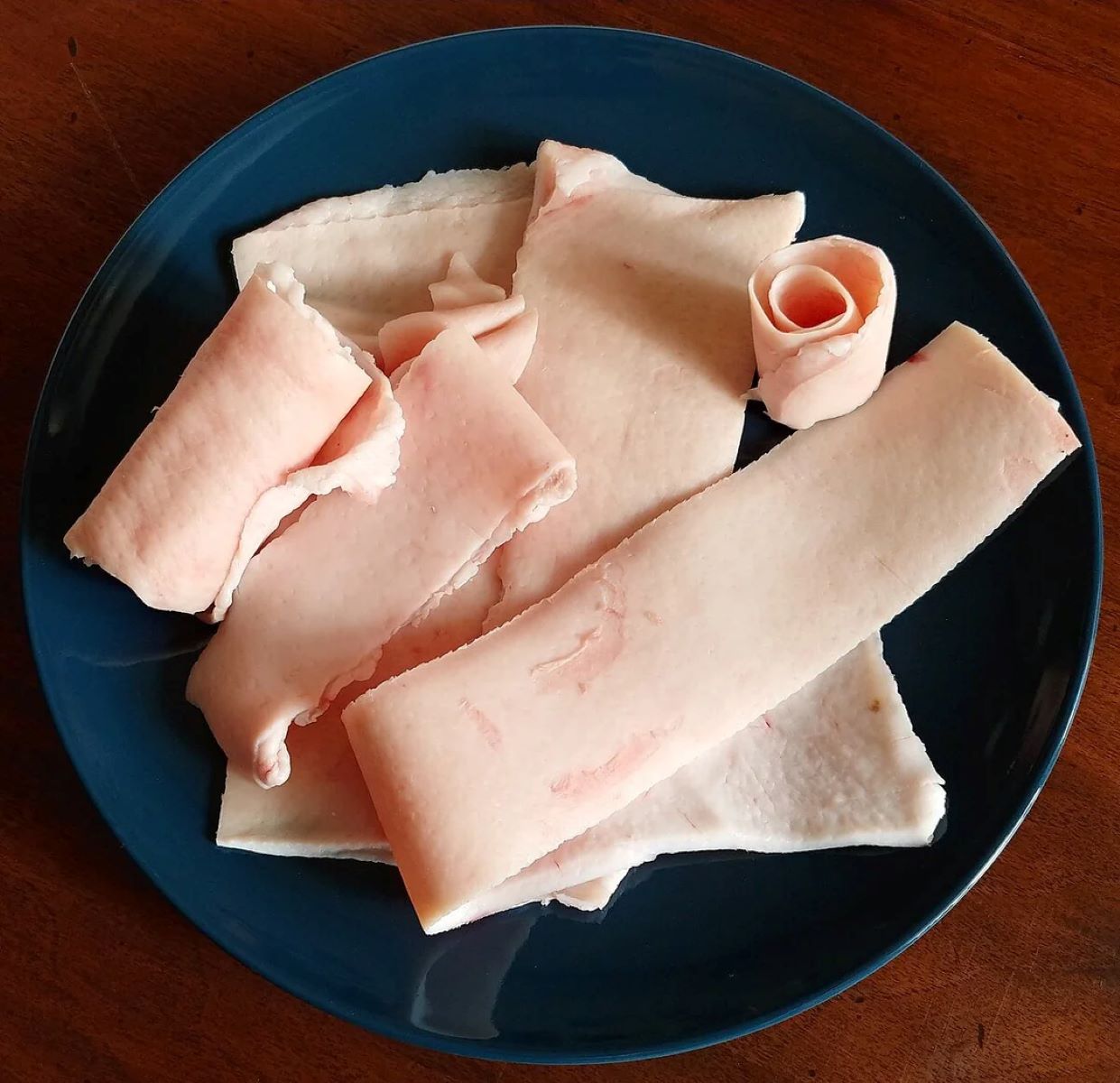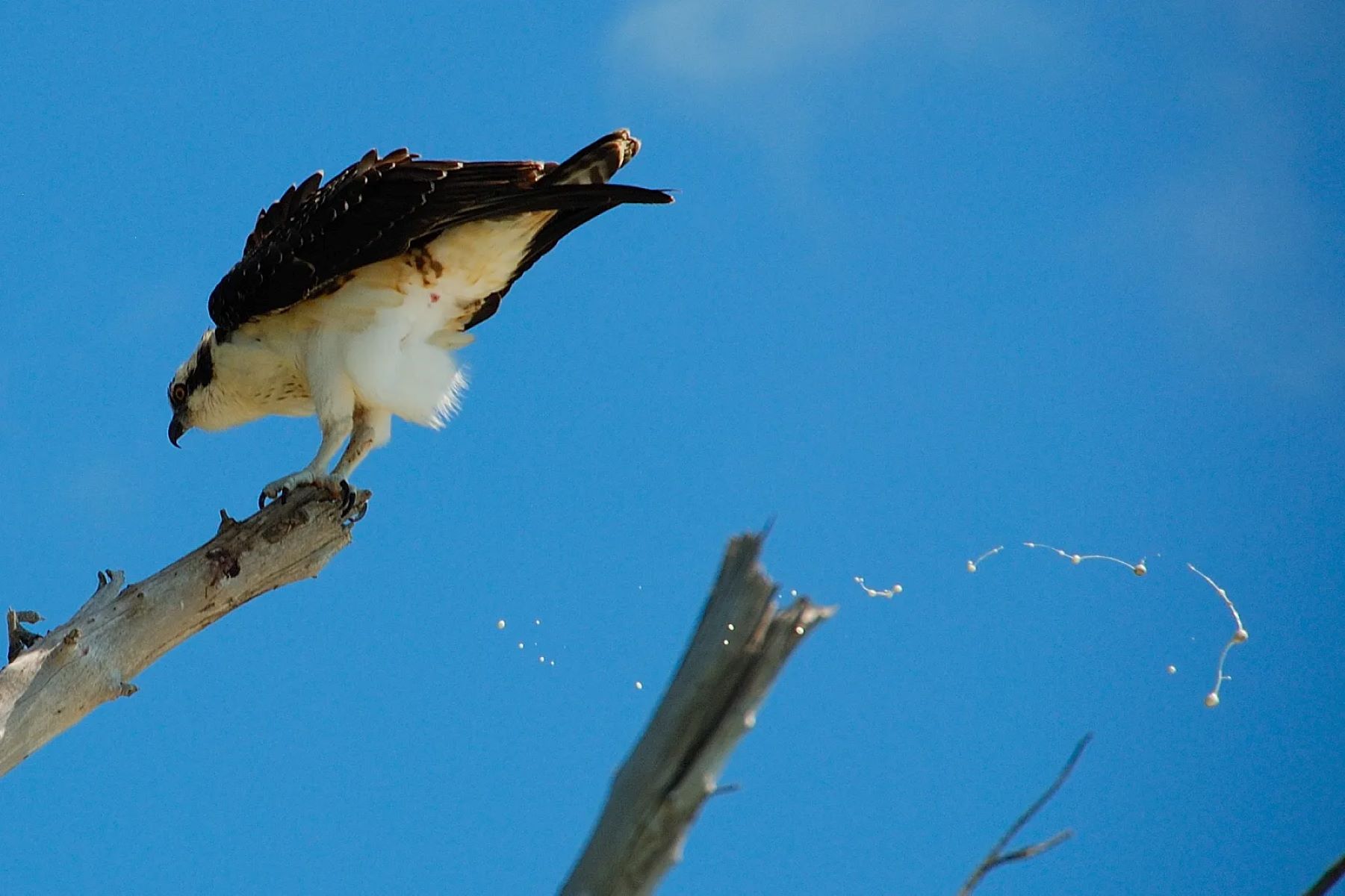Home>Health and Wellness>The Surprising Truth About Bright Yellow And Loose Dog Poop
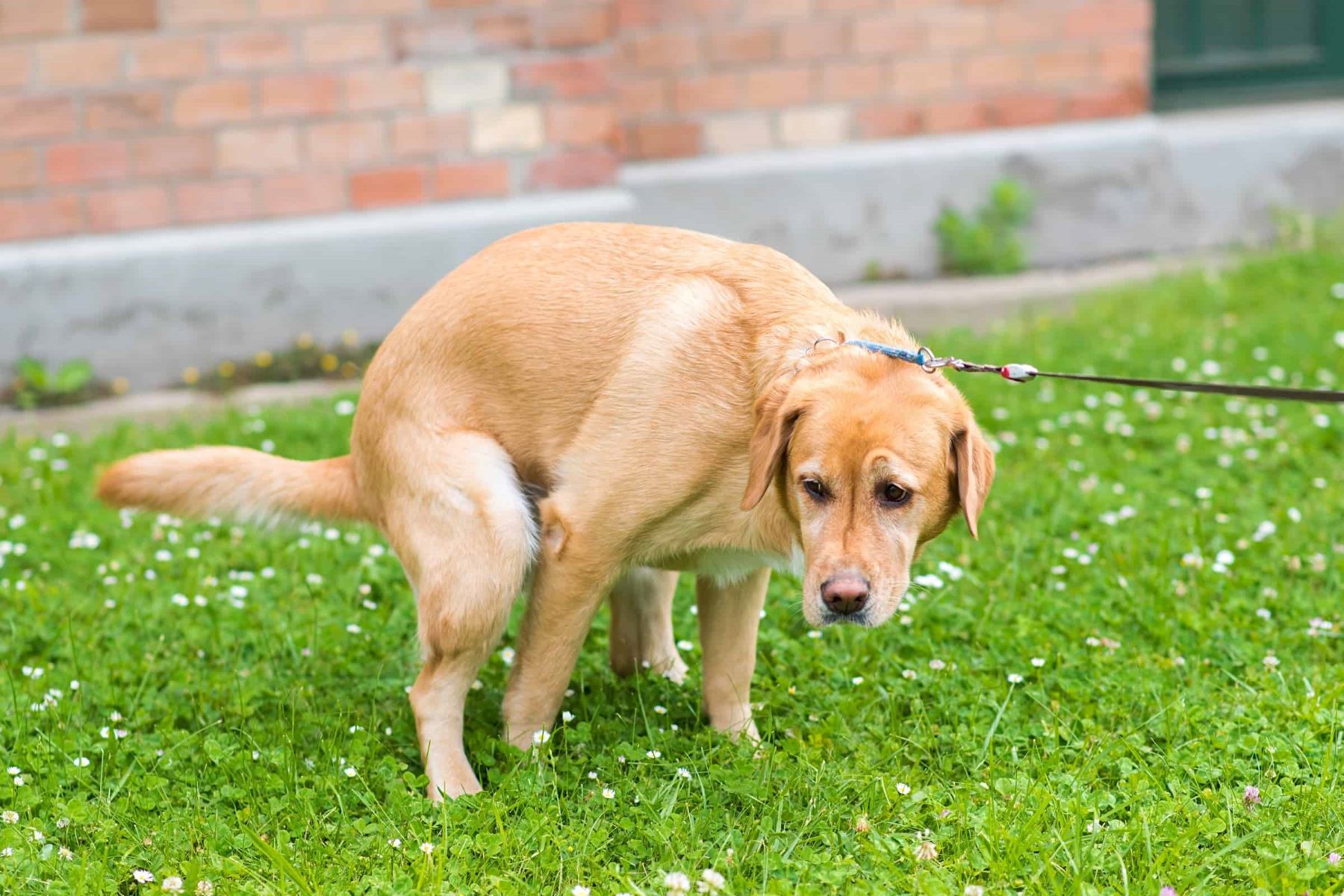

Health and Wellness
The Surprising Truth About Bright Yellow And Loose Dog Poop
Published: January 22, 2024
Discover the surprising connection between bright yellow and loose dog poop and its impact on your health and wellness. Uncover valuable insights and tips to maintain your pet's well-being.
(Many of the links in this article redirect to a specific reviewed product. Your purchase of these products through affiliate links helps to generate commission for Regretless.com, at no extra cost. Learn more)
Table of Contents
Introduction
Dog owners often find themselves examining their furry friend's poop, and for good reason. A dog's feces can provide valuable insights into their health and well-being. One of the most surprising and concerning discoveries for pet owners is bright yellow and loose dog poop. While it may initially seem alarming, understanding the reasons behind these changes in color and consistency is crucial for ensuring the well-being of our canine companions.
In this article, we will delve into the fascinating world of dog poop, exploring the science behind its color, the influence of diet, and the potential health implications of bright yellow and loose stool. By shedding light on this topic, we aim to equip dog owners with the knowledge needed to identify and address any concerns related to their pet's digestive health. Additionally, we will provide practical tips for managing dog poop color and consistency, empowering pet owners to take proactive steps in maintaining their dog's overall well-being.
Join us on this enlightening journey as we uncover the surprising truth about bright yellow and loose dog poop, unraveling the mysteries behind these peculiar changes and offering valuable insights to ensure the health and happiness of our beloved canine companions.
The Science Behind Dog Poop Color
The color of a dog's poop can serve as a visual indicator of their overall health. Understanding the science behind the various hues can provide valuable insights for pet owners. Typically, normal dog poop appears brown due to the presence of bile, which is produced by the liver and aids in the digestion of fats. However, deviations from this norm, such as bright yellow poop, can raise concerns and prompt further investigation.
The color of dog poop is influenced by several factors, including diet, bile pigments, and the presence of bacteria in the gastrointestinal tract. When the digestive process is functioning optimally, bile pigments interact with the food and waste products, resulting in the characteristic brown color of feces. However, alterations in this process can lead to changes in stool color.
Bright yellow dog poop may indicate a rapid transit time through the digestive system. This accelerated movement can prevent bile from being fully broken down and absorbed, leading to the excretion of undigested bile pigments, which manifest as a vibrant yellow color in the stool. Additionally, the presence of mucus in the stool can further contribute to its yellow appearance.
Furthermore, certain medical conditions, such as liver disease or malabsorption disorders, can also impact the color of a dog's stool. Liver-related issues may affect the production and secretion of bile, potentially resulting in pale or yellowish poop. Similarly, malabsorption disorders can interfere with the absorption of nutrients and bile pigments, leading to changes in stool color and consistency.
In summary, the science behind dog poop color is multifaceted, involving the interplay of digestive processes, bile pigments, and potential health conditions. By recognizing the significance of stool color as a reflection of a dog's internal well-being, pet owners can proactively monitor their pet's health and seek appropriate veterinary care when necessary. Understanding the underlying science empowers dog owners to be attentive to their pet's digestive health, ensuring early detection and intervention when abnormalities in stool color arise.
The Role of Diet in Dog Poop Color
The diet plays a pivotal role in determining the color of a dog's poop. The foods that dogs consume directly influence the composition and appearance of their stool. A balanced and nutritious diet is essential for maintaining optimal digestive health and ensuring normal stool color.
One of the primary factors contributing to the color of dog poop is the presence of bile pigments. Bile, produced by the liver and stored in the gallbladder, is released into the small intestine to aid in the digestion and absorption of fats. As food moves through the digestive tract, bile pigments interact with the waste products, resulting in the characteristic brown color of feces. However, certain dietary components can lead to deviations from this norm.
For instance, the consumption of certain food dyes or pigmented ingredients may impart a temporary change in stool color. Brightly colored treats or supplements may introduce artificial pigments into a dog's system, potentially altering the color of their poop. Additionally, natural pigments present in certain fruits and vegetables, such as beets or blueberries, can also influence stool color, causing it to appear reddish or purplish.
Moreover, the presence of undigested food particles in the stool can affect its color. Inadequate digestion and absorption of nutrients may result in the excretion of food remnants, leading to variations in stool color and consistency. High-fat diets can expedite the transit time of food through the digestive system, potentially impacting the breakdown and absorption of bile pigments, thereby influencing stool color.
Furthermore, dietary indiscretions, such as scavenging or consuming non-food items, can lead to gastrointestinal upset and changes in stool color. Ingestion of foreign objects or spoiled food may cause acute digestive disturbances, resulting in abnormal stool color and texture.
In summary, the role of diet in dog poop color is significant, with various dietary factors contributing to the appearance of a dog's stool. By providing a well-balanced diet and monitoring the consumption of pigmented foods and treats, pet owners can play an active role in maintaining normal stool color and promoting their dog's digestive well-being. Understanding the impact of diet on stool color empowers pet owners to make informed choices regarding their dog's nutrition, fostering overall health and vitality.
The Impact of Bright Yellow Dog Poop
Bright yellow dog poop can be a cause for concern among pet owners, prompting a closer examination of its potential impact on a dog's health. The distinct coloration of the stool often raises questions about its significance and any associated implications. Understanding the impact of bright yellow dog poop is essential for recognizing potential health issues and taking appropriate measures to address them.
First and foremost, bright yellow dog poop may indicate an imbalance in the digestive process. The vibrant coloration can be attributed to the rapid transit of food through the gastrointestinal tract, preventing adequate breakdown and absorption of bile pigments. This accelerated movement can lead to the excretion of undigested bile, manifesting as bright yellow stool. While occasional instances of yellow poop may not necessarily indicate a severe problem, persistent or recurrent occurrences warrant attention and evaluation by a veterinarian.
Additionally, the presence of mucus in bright yellow dog poop can further underscore potential digestive disturbances. Mucus, when observed in conjunction with the vivid coloration of the stool, may indicate underlying gastrointestinal irritation or inflammation. The combination of yellow stool and mucus can serve as a red flag for digestive issues that require thorough assessment and targeted intervention.
Moreover, the impact of bright yellow dog poop extends beyond its visual appearance. It serves as a valuable indicator of potential health concerns, prompting pet owners to consider various factors that may contribute to the observed changes. Dietary indiscretions, food intolerances, or underlying medical conditions, such as liver disorders or malabsorption issues, can influence stool color and consistency. By recognizing the impact of bright yellow dog poop, pet owners can proactively address these underlying factors, thereby safeguarding their dog's digestive health and overall well-being.
Furthermore, the psychological impact on pet owners should not be overlooked. The sight of bright yellow dog poop can evoke worry and uncertainty, prompting a sense of urgency in seeking answers and solutions. Understanding the potential impact of stool color variations on pet owners' emotional well-being underscores the importance of providing clear and informative guidance to alleviate concerns and empower proactive decision-making.
In essence, the impact of bright yellow dog poop encompasses not only its physiological significance but also its implications for the overall health and emotional well-being of both the dog and its owner. By recognizing the potential indicators associated with yellow stool, pet owners can take proactive steps to address underlying issues, seek veterinary guidance, and promote the optimal digestive health of their beloved canine companions.
Potential Health Concerns Related to Loose Dog Poop
Loose dog poop, characterized by an abnormal soft or watery consistency, can raise significant health concerns for pet owners. While occasional instances of loose stool may be attributed to dietary indiscretions or temporary gastrointestinal disturbances, persistent or recurrent episodes warrant careful consideration and proactive management. Understanding the potential health concerns related to loose dog poop is essential for recognizing underlying issues and safeguarding the well-being of our canine companions.
One of the primary health concerns associated with loose dog poop is dehydration. Diarrhea, often accompanied by loose stool, can lead to excessive fluid loss, potentially resulting in dehydration. Dehydration poses a significant risk to a dog's health, impacting vital organ function and overall well-being. Recognizing the link between loose stool and dehydration underscores the importance of prompt intervention and rehydration strategies to mitigate potential health complications.
Furthermore, loose dog poop can be indicative of gastrointestinal infections or parasitic infestations. Bacterial, viral, or parasitic agents can disrupt the normal functioning of the digestive system, leading to diarrhea and loose stool. These infections may result from exposure to contaminated environments, ingestion of pathogens, or inadequate hygiene practices. Identifying the underlying cause of loose stool, whether infectious or parasitic, is crucial for implementing targeted treatment and preventing the spread of potential pathogens.
In addition, dietary intolerances or sensitivities can contribute to loose dog poop, signaling underlying digestive challenges. Certain ingredients in commercial pet foods or dietary indiscretions may trigger adverse reactions in dogs, leading to gastrointestinal upset and loose stool. Identifying and addressing dietary triggers is essential for alleviating discomfort and promoting digestive health.
Moreover, loose dog poop can be a manifestation of underlying medical conditions, such as inflammatory bowel disease, pancreatitis, or endocrine disorders. These health issues can disrupt normal digestive processes, leading to persistent loose stool and potential complications. Early detection and intervention are paramount in managing these conditions and minimizing their impact on a dog's overall health.
By acknowledging the potential health concerns related to loose dog poop, pet owners can take proactive measures to address underlying issues, seek veterinary guidance, and promote optimal digestive health for their beloved pets. Vigilance, timely intervention, and a thorough understanding of the implications of loose stool are essential in safeguarding the well-being of our canine companions.
Tips for Managing Dog Poop Color and Consistency
-
Dietary Modifications: Ensuring a well-balanced and nutritious diet is fundamental in maintaining normal stool color and consistency. Opt for high-quality dog food that aligns with your pet's specific nutritional needs, avoiding excessive amounts of treats or table scraps that may disrupt digestive processes.
-
Hydration: Adequate hydration plays a crucial role in promoting healthy digestion and normal stool consistency. Provide access to fresh, clean water at all times, especially during hot weather or increased physical activity.
-
Regular Exercise: Encouraging regular exercise not only contributes to your dog's overall well-being but also supports healthy digestion. Physical activity helps regulate bowel movements and promotes optimal gastrointestinal function.
-
Monitoring Treats and Supplements: Be mindful of the treats and supplements you offer to your dog. Limit the intake of artificially colored treats and carefully consider the ingredients of any supplements to minimize the impact on stool color and consistency.
-
Routine Veterinary Care: Schedule regular check-ups with your veterinarian to monitor your dog's health and address any concerns related to stool color or consistency. Veterinary guidance can provide valuable insights and early intervention if abnormalities are detected.
-
Stress Management: Minimize stress and anxiety in your dog's environment, as these factors can contribute to digestive disturbances. Create a calm and supportive atmosphere to promote healthy digestion and overall well-being.
-
Parasite Prevention: Implement a comprehensive parasite prevention program recommended by your veterinarian to safeguard your dog against gastrointestinal parasites that can disrupt stool color and consistency.
-
Gradual Diet Changes: When transitioning to a new diet, introduce the changes gradually to allow your dog's digestive system to adapt, minimizing the likelihood of digestive upset and stool irregularities.
-
Prompt Veterinary Consultation: If you notice persistent or concerning changes in your dog's stool color or consistency, seek prompt veterinary consultation. Early detection and intervention can address underlying issues and prevent potential health complications.
By incorporating these tips into your dog's care routine, you can actively manage and promote healthy stool color and consistency, ensuring the overall well-being of your canine companion. Remember that attentive monitoring and proactive measures are essential in maintaining optimal digestive health for your beloved pet.
Conclusion
In conclusion, the surprising truth about bright yellow and loose dog poop unveils the intricate relationship between stool color, consistency, and a dog's overall health. Understanding the science behind dog poop color, the influence of diet, and the potential health implications of bright yellow and loose stool empowers pet owners to actively monitor and address their canine companion's digestive well-being.
The color and appearance of a dog's stool serve as valuable indicators of their internal health, reflecting the interplay of digestive processes, bile pigments, and potential medical conditions. Bright yellow dog poop, often associated with rapid transit through the digestive system, can signal imbalances that warrant attention and evaluation. Additionally, loose stool raises concerns about dehydration, gastrointestinal infections, dietary sensitivities, and underlying medical conditions, highlighting the need for proactive management and veterinary guidance.
By recognizing the impact of stool color variations on a dog's health and emotional well-being, pet owners can take proactive steps to address underlying issues, seek veterinary guidance, and promote optimal digestive health for their beloved pets. Implementing dietary modifications, hydration strategies, regular exercise, and routine veterinary care, while monitoring treats, supplements, and stress levels, enables pet owners to actively manage and promote healthy stool color and consistency.
Ultimately, the management of dog poop color and consistency is a vital aspect of responsible pet care, encompassing attentive monitoring, timely intervention, and a thorough understanding of the implications of stool irregularities. By incorporating these insights into their canine companion's care routine, pet owners play a pivotal role in safeguarding their dog's digestive health and overall well-being.
In essence, the surprising truth about bright yellow and loose dog poop underscores the importance of informed and proactive pet ownership, ensuring that dogs receive the attention, care, and support needed to thrive in good health. By staying attuned to their pet's digestive health and taking proactive measures when necessary, pet owners can foster a fulfilling and vibrant life for their beloved canine companions.

